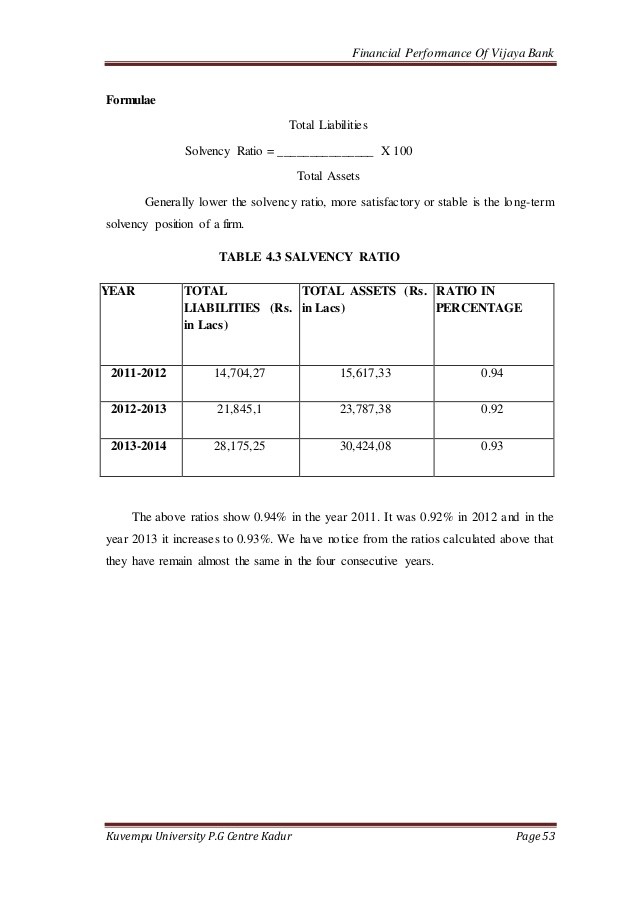A Breakdown of Solvency Ratios Financial Web
Post on: 12 Май, 2015 No Comment

Solvency ratios measure how easily a company can pay off long-term debt. When a company does not earn enough income to easily repay debts, it will fall into a negative cash flow pattern. In this case, the company will have to cut back employees or sell off assets to avoid defaulting on loans. Even with these measures, long-term negative cash flow can result in bankruptcy. Whether a company is solvent is an important factor in deciding to invest or hold on to shares of the company.
Solvency Ratio
The most basic solvency ratio measures a company’s ability to meet debt obligations according to this simple formula:
Solvency ratio = (Net Profit after Taxes + Depreciation)/ (Long Term + Short Term Liabilities)
Important Terms
To understand this formula, consider its underlying parts:
- Net profit after taxes — A company’s net profit is its income minus expenses. It is important to note this formula uses the after-tax version of earnings. Some solvency formulas, such as the Debt/EBITDA formula, use Earnings Before Interest and Taxes (EBIT). This does not account for actual cash flow of the business. The solvency ratio used above attempts to more accurately determine solvency by using only net profits.
- Depreciation — This is a figure that accounts for the fact some of a business’s assets will lose value over time. Depreciation can be written off in business accounting. This generates a type of revenue for a company that cannot be described by measuring its profit through sales.

- Long-term liabilities — This is the amount of debt a company has on leases, bonds and other items that will be due in more than one year.
- Short-term liabilities — This is the amount of debt a company must pay immediately within the next twelve months.
Solvency Ratio and Bankruptcy
When you are evaluating whether to invest in a particular company, the risk that it may go bankrupt is the largest single risk posed to your investment. Bankruptcy only occurs because of debt. If a company has no debt, when it closes its doors, it will pay off investors and walk away. If a company has debt, it must liquidate assets to pay off lenders prior to closing its doors. These liabilities are senior liens on the company and its assets. No investors will be repaid until lenders have been repaid. If a company is at risk of insolvency it has a very low solvency ratio. As a result, should the company experience any drop in profits, it is likely it would have to declare bankruptcy.
Using Solvency Ratio
It is important to understand solvency ratio can be affected by industry and season. Some industries can operate with a much lower ratio because they have less risk of losing profits. For example, utilities companies have historically low solvency ratios. On the other hand, automobile manufacturers should maintain high solvency ratios. They are more subject to damage if there is a swing in the market, and these luxury purchase companies will often be the first to suffer bankruptcy if the market turns.
$7 Online Trading. Fast executions. Only at Scottrade














